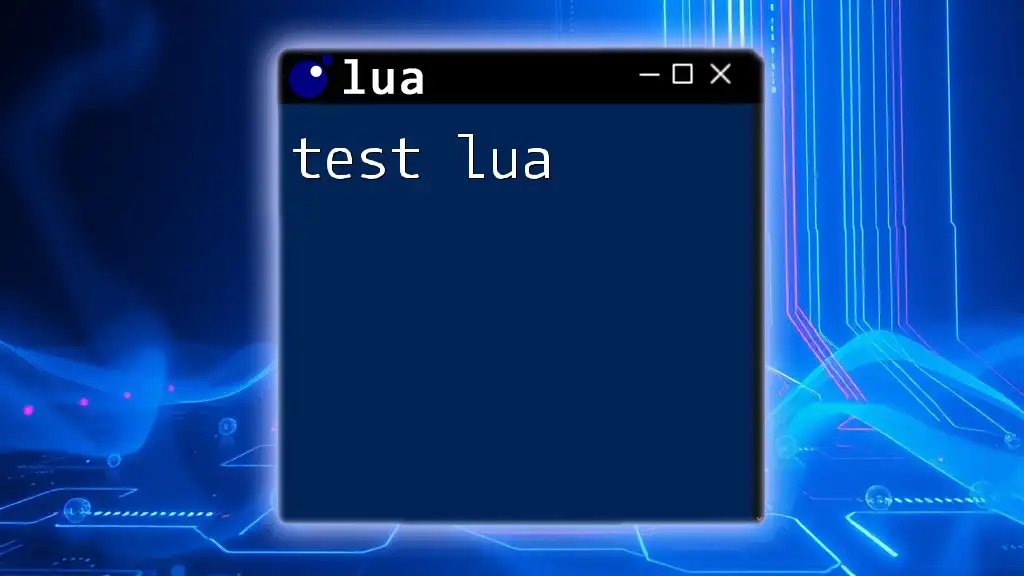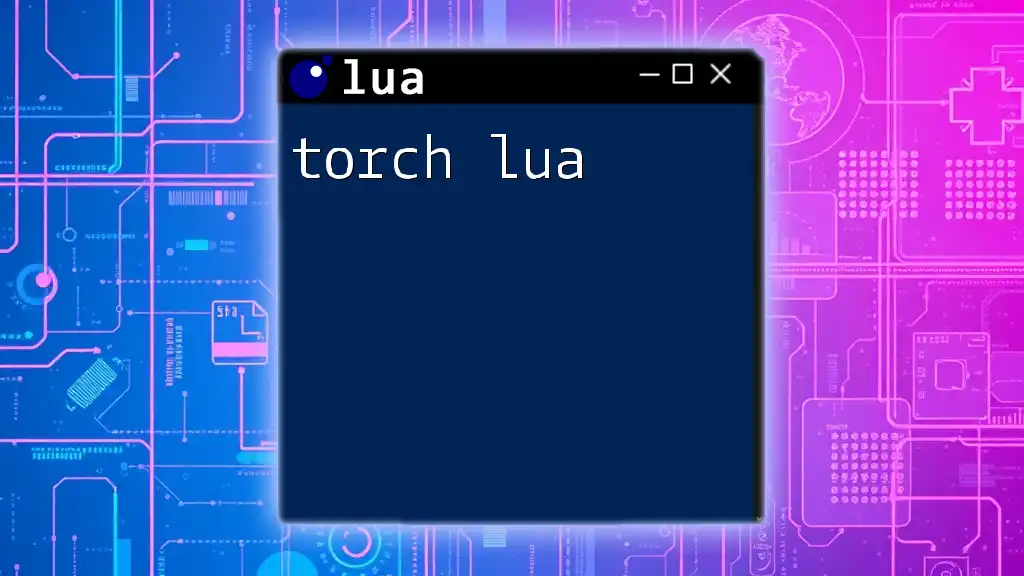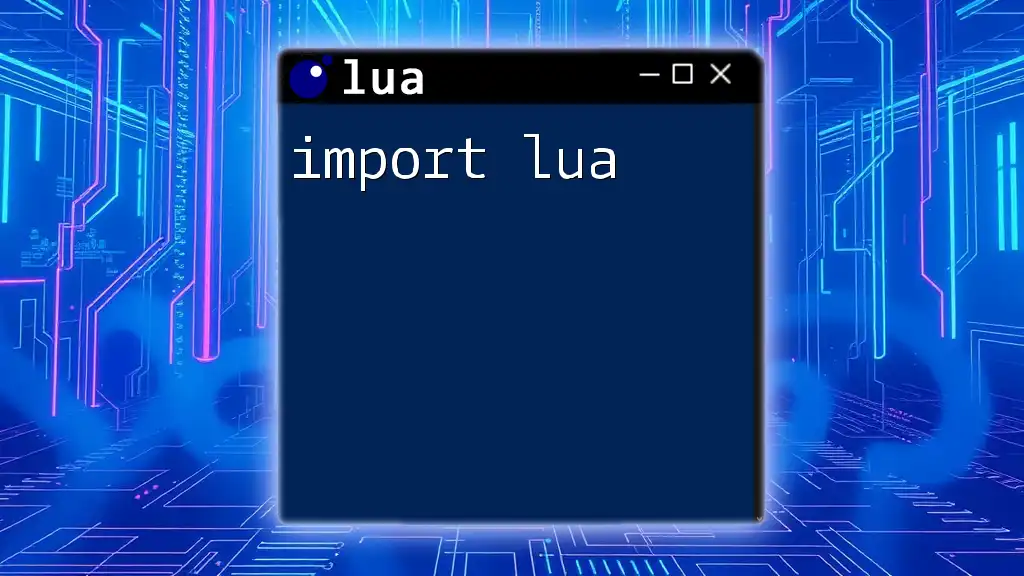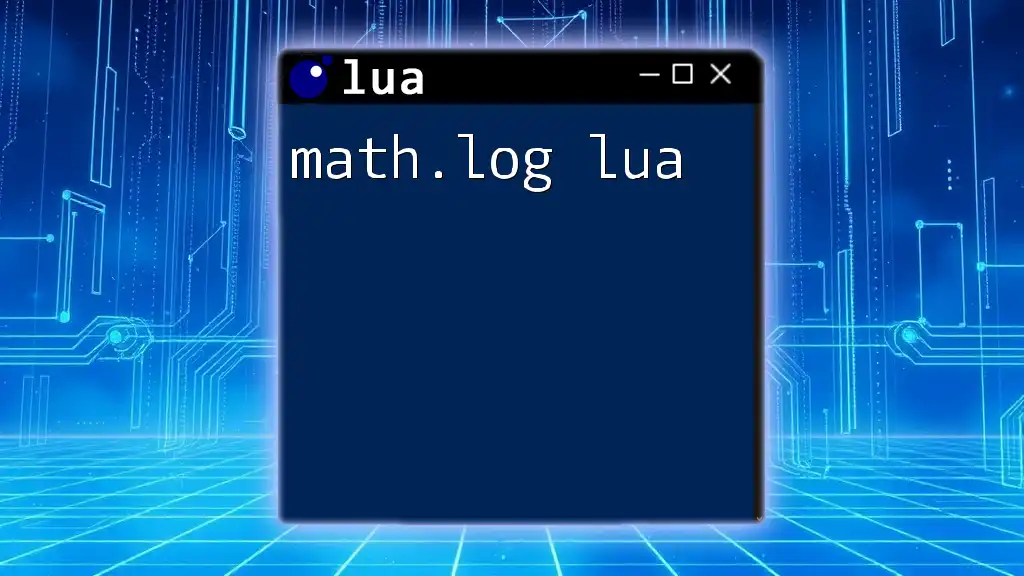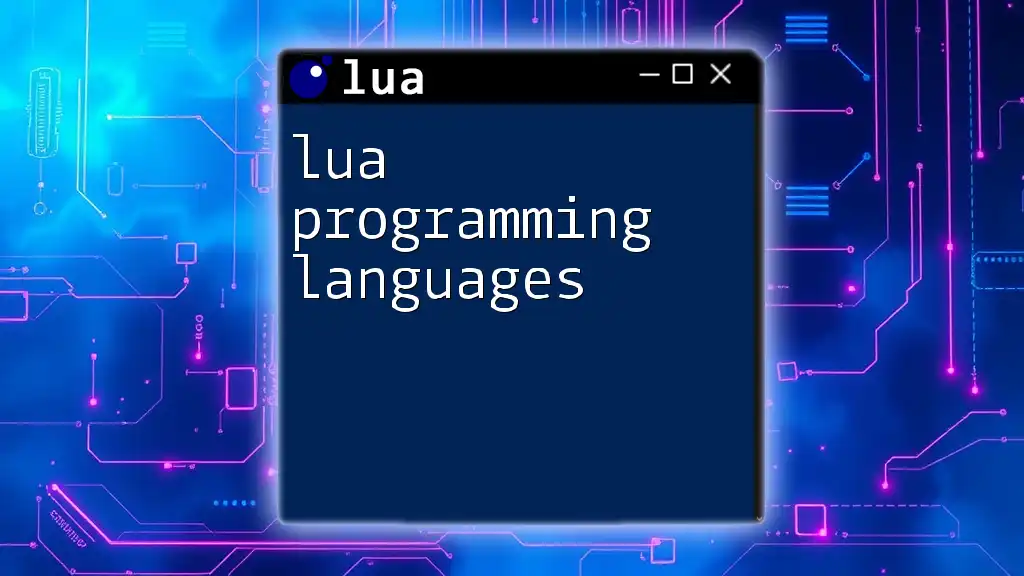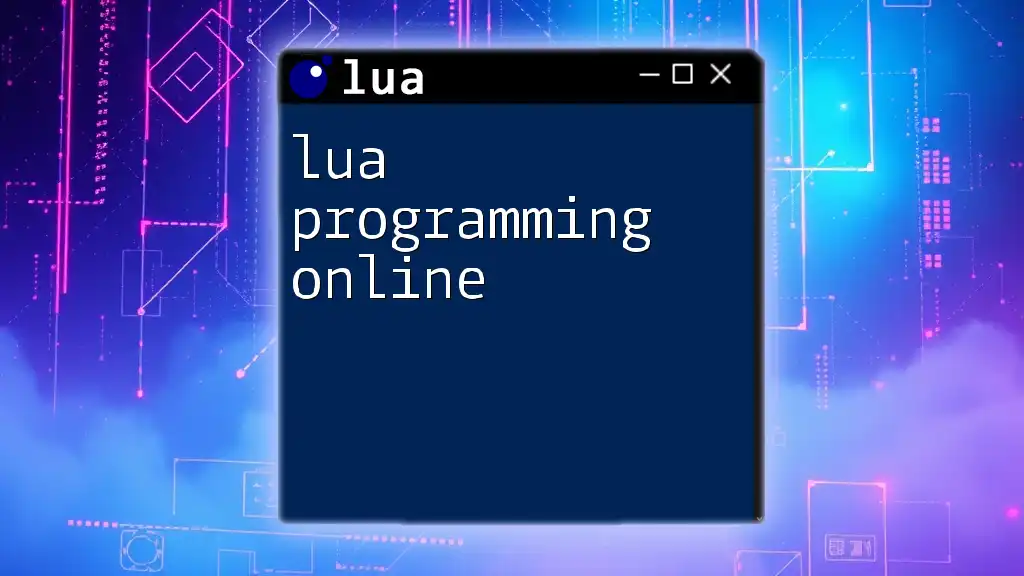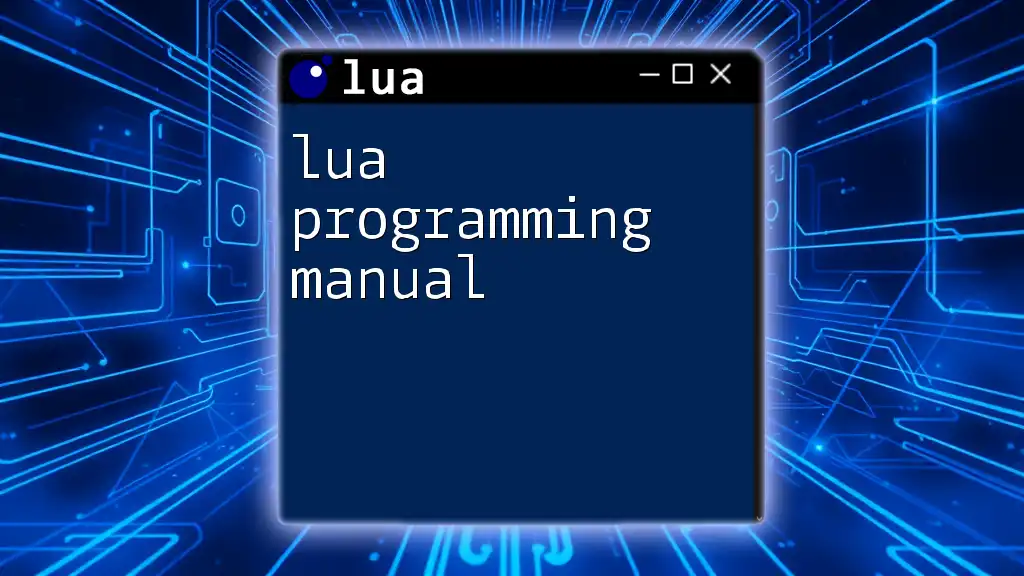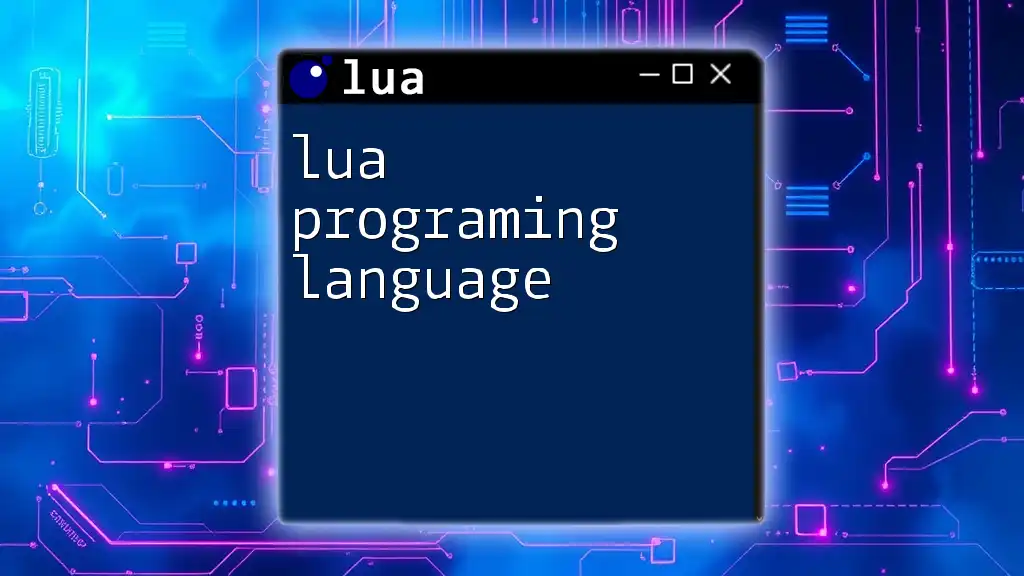"Text programs in Lua allow users to efficiently manipulate and process text through a variety of commands and functions."
Here's a simple example of a Lua script that reverses a given string:
function reverseString(str)
return str:reverse()
end
print(reverseString("Hello, Lua!"))
Understanding Lua and Its String Library
What is Lua?
Lua is a lightweight, embeddable scripting language that is particularly well-suited for configuration, scripting, and rapid application development. Originally designed for extending applications and for embedding in games, Lua has gained popularity not only in game development but also in web applications, embedded systems, and data processing. Its simplicity and versatility make it a great choice for programming beginners and experienced developers alike.
Introduction to Lua's String Library
Manipulating text is a fundamental aspect of programming, and Lua provides a robust string library that simplifies this task. Strings in Lua are immutable, meaning that operations on strings return new strings rather than modifying the original. Understanding how to effectively use the string library is essential for anyone looking to create efficient text processing applications in Lua.
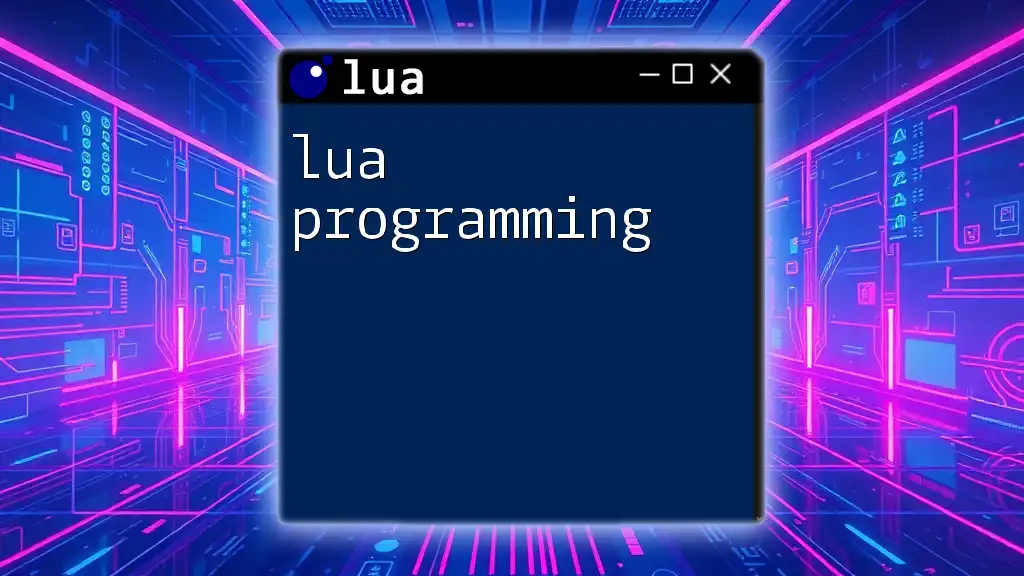
Basic String Operations
Creating Strings
In Lua, you can create strings using either single quotes (`'`) or double quotes (`"`). While both are functionally equivalent, choosing one over the other can depend on the specific needs of your code, especially when dealing with string literals that contain quote characters.
local singleQuoted = 'Hello, Lua!'
local doubleQuoted = "Learning Lua text programming."
Common String Functions
String Length
To determine the length of a string, Lua provides the `string.len()` function. This is particularly useful in scenarios where you need to validate input or control string manipulation operations.
local str = "Hello, Lua!"
print(string.len(str)) -- Output: 12
String Concatenation
Concatenating strings in Lua can be achieved using the `..` operator. This is fundamental when you want to combine multiple strings into one.
local greeting = "Hello"
local name = "World"
print(greeting .. ", " .. name .. "!") -- Output: Hello, World!
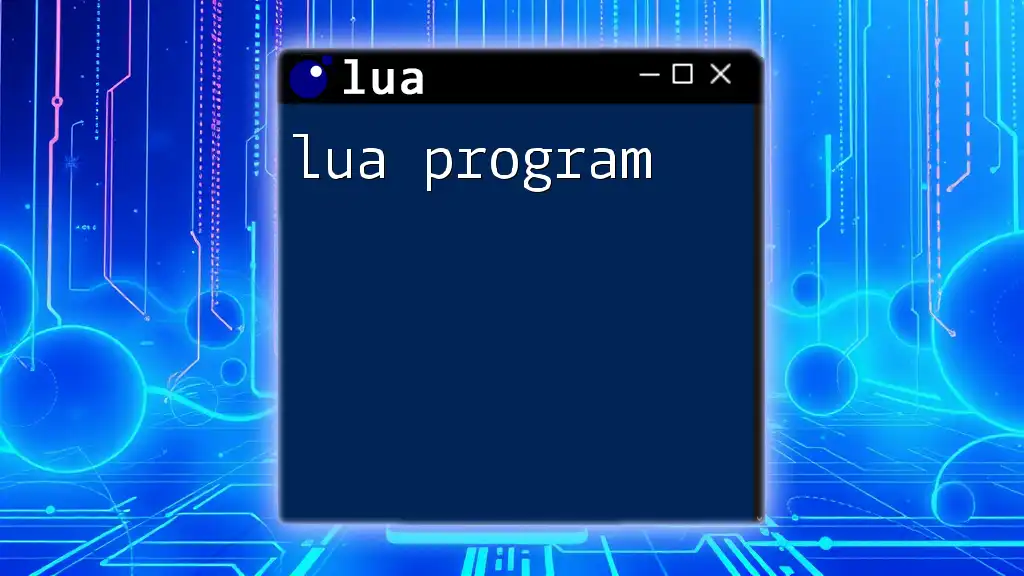
Advanced String Manipulation
String Formatting
Lua's `string.format()` function is a powerful tool for creating formatted strings. This function allows you to embed values into a string template, making it particularly useful for displaying data in a human-readable manner.
local name = "Lua"
local number = 20
print(string.format("Welcome to %s programming! You have %d new messages.", name, number))
String Patterns and Matching
Pattern Matching Basics
Lua’s pattern matching capabilities make it more flexible than traditional regular expressions. For example, you may want to extract a numeric version from a string. The `string.match()` function can assist with this, allowing you to search for patterns within your strings.
local stringToMatch = "Lua version 5.4"
local version = string.match(stringToMatch, "%d+%.%d+")
print(version) -- Output: 5.4
Using `string.gmatch()` for Iteration
The `string.gmatch()` function is useful for iterating over substrings that match a specified pattern. This can be ideal for processing data in a controlled manner.
local str = "apple banana cherry"
for fruit in string.gmatch(str, "%a+") do
print(fruit)
end
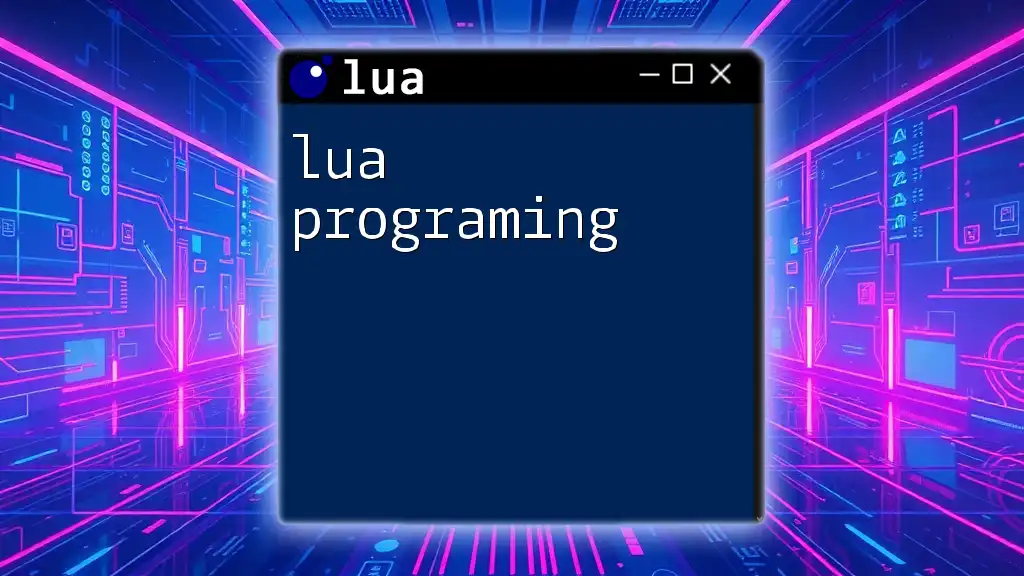
Working with File I/O for Text Processing
Reading from Text Files
Handling text files is often essential for many applications. Lua’s file I/O capabilities make it straightforward to read from files. Here’s how you can open a file and read its contents line by line.
local file = io.open("sample.txt", "r")
if file then
for line in file:lines() do
print(line)
end
file:close()
end
Writing to Text Files
Similarly, writing to text files is just as easy. Here’s how you can create a file and write data to it.
local file = io.open("output.txt", "w")
if file then
file:write("Hello, Lua File I/O!\n")
file:write("Writing text data is straightforward.")
file:close()
end
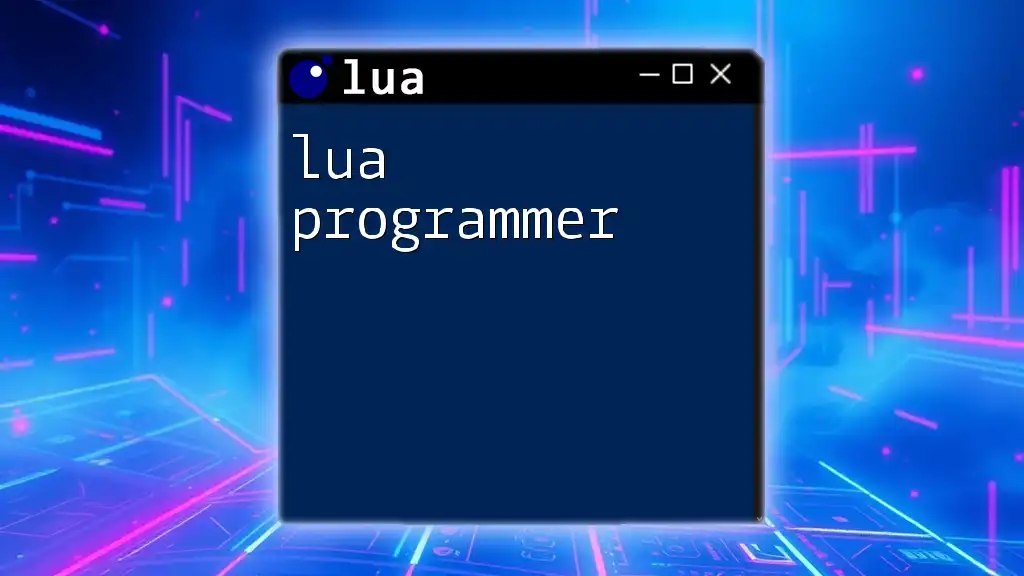
Error Handling and Debugging
Common String Errors
When working with strings, you may encounter common pitfalls such as indexing out of bounds or unexpected `nil` values. It is crucial to validate inputs and check for errors in your string data to prevent runtime failures. Using `print()` statements to output variable values and data types can help identify and debug issues quickly.
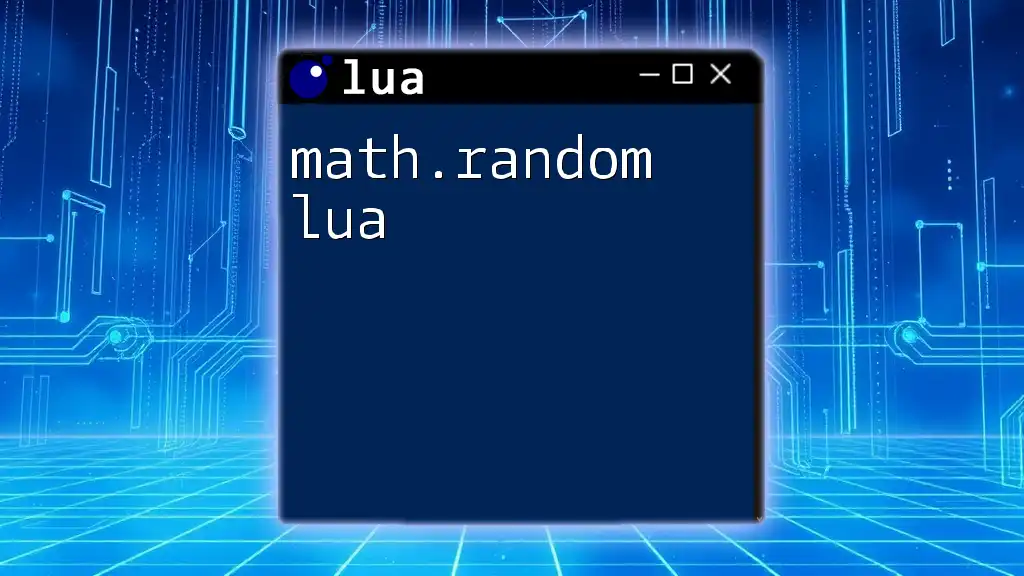
Best Practices for Text Programming in Lua
Structuring Your Code
To write maintainable and readable code, consider structuring your program into functions and modules. This not only enhances clarity but also makes testing and debugging easier. Always remember to comment on your code, especially the more complex sections, to clarify your intentions for future reference.
Optimizing Performance
When handling large strings or extensive text manipulation, realize that performance can be affected by the way strings are processed. Rather than concatenating strings in a loop, aim to store them in a table and join them at the end to optimize memory usage and improve execution time.
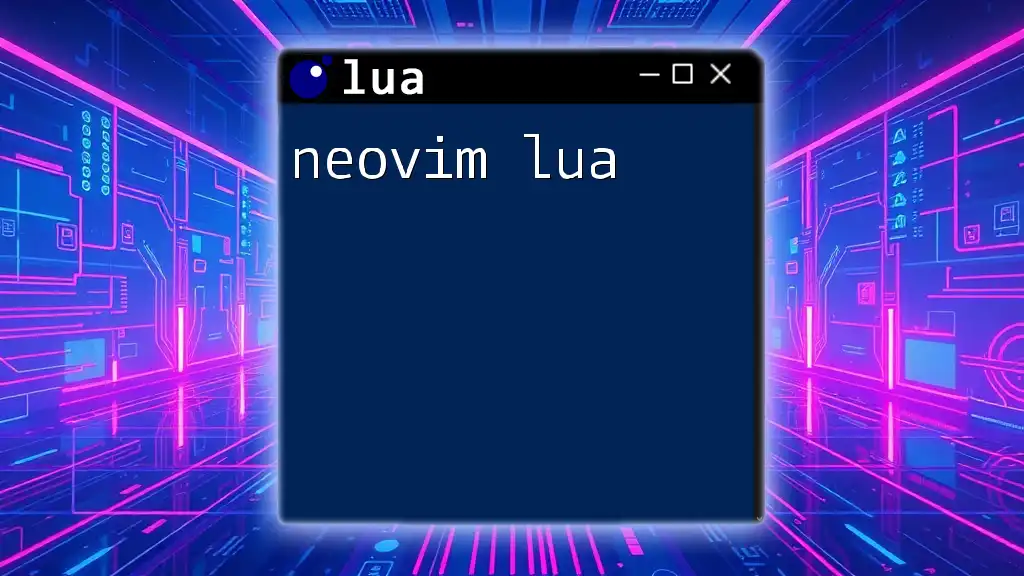
Conclusion
Mastering string manipulation in Lua is essential for effective text programming. The capabilities provided by Lua's string library empower developers to create dynamic applications that manage and process text efficiently. As you delve deeper into Lua, explore more advanced topics in string handling and continue to refine your skills in text processing.
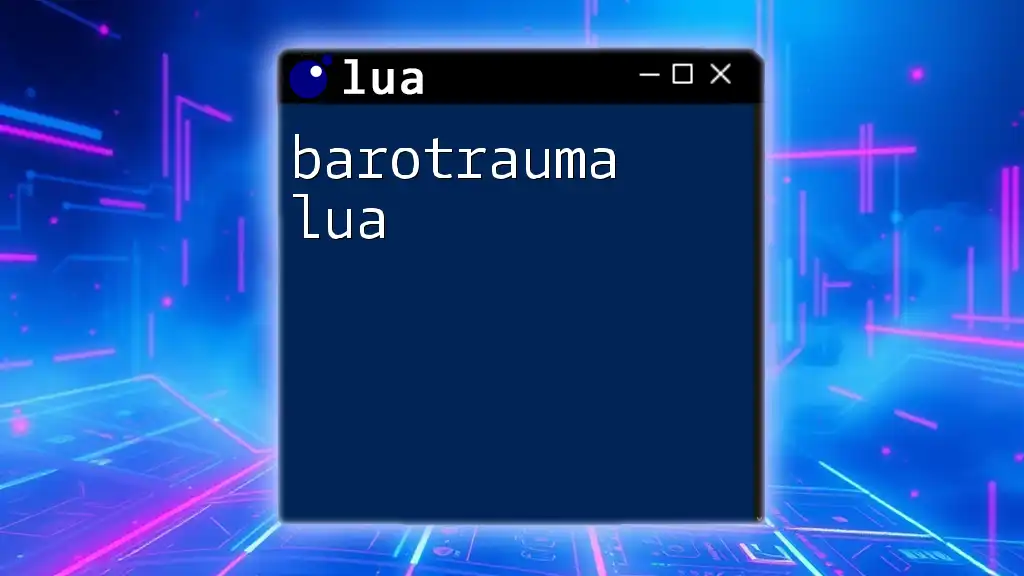
Additional Resources
To further enhance your understanding of Lua, consider exploring the official [Lua documentation](https://www.lua.org/manual/5.1/), engaging in community forums, and practicing with various Lua projects. The journey of learning is ongoing, and the resources available can help you become proficient in creating robust applications using Lua's powerful text manipulation features.







